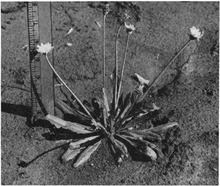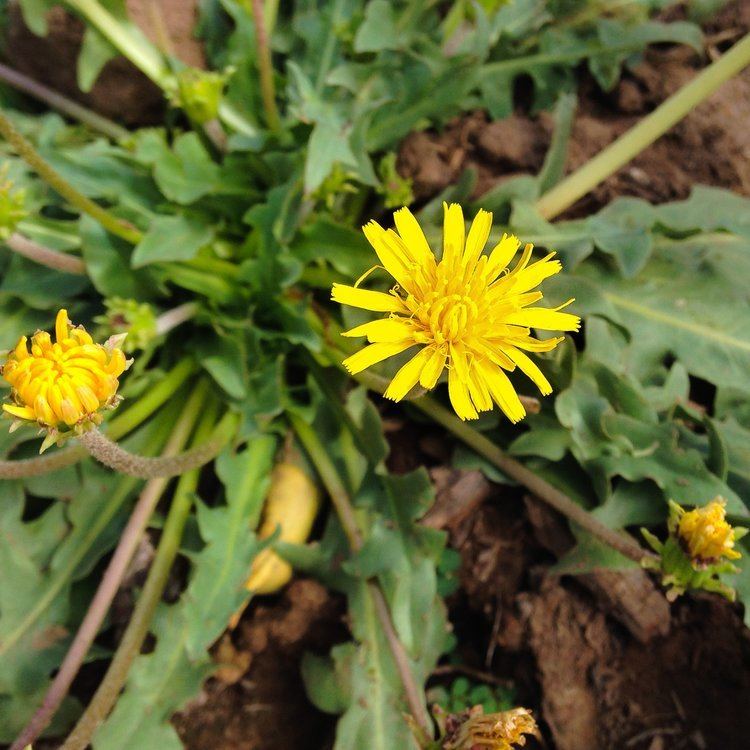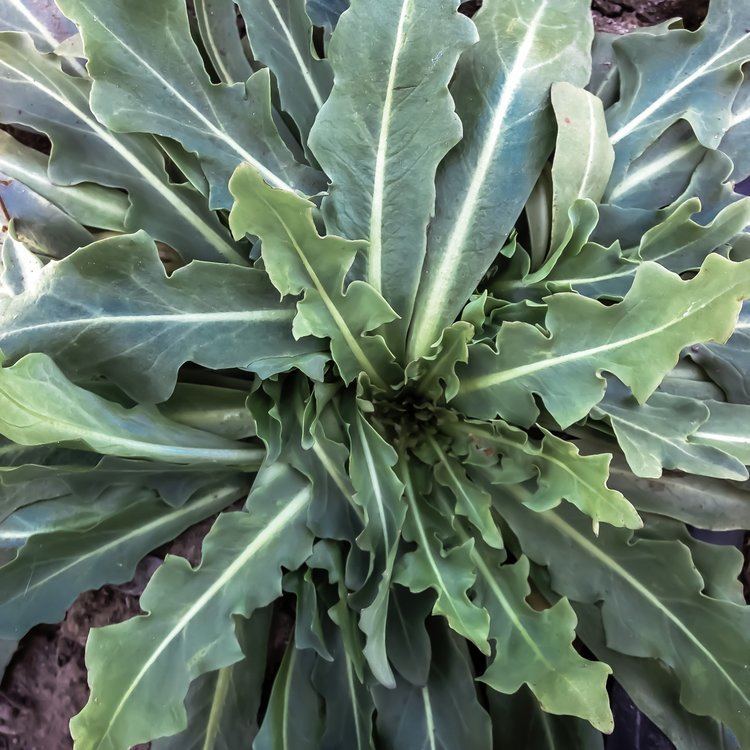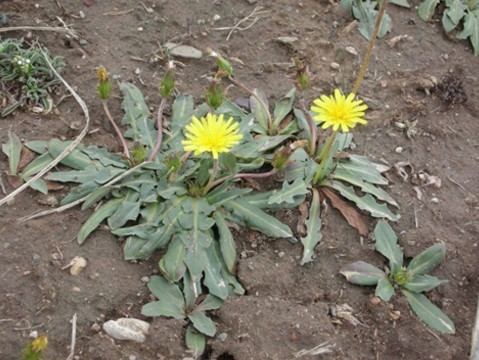Higher classification Dandelion | Rank Species | |
 | ||
Similar Dandelion, Parthenium argentatum, Daisy family, Taraxacum hybernum, Scorzonera tau‑saghyz | ||
Taraxacum kok-saghyz, often abbreviated as TKS and commonly referred to as the Kazakh dandelion, rubber root, or Russian dandelion, is a species of dandelion native to Kazakhstan that is notable for its production of high quality rubber. T. kok-saghyz was discovered in Kazakhstan in 1932 by the Soviet Union in an effort to find a domestic source of rubber.
Contents

Etymology

Kok-saghyz is derived from the Kazakh kök-sağız (көк-сағыз), with kök meaning root or tuber and saghyz meaning rubber or gum.
Description

Taraxacum kok-saghyz is a perennial plant with a yellow composite flower characteristic of the Taraxacum genus. Each flower head may be approximately one inch in diameter and be made up for 50 to 90 florets. Plants may contain 25 to 50 leaves arranged in one or more rosettes at the upper end of the root. Taraxacum kok-saghyz can be differentiated from the common dandelion (Taraxacum officinale) by its generally smaller, grayish green leaves and hornlike structures on the bracts surrounding the bud. Flowers are hermaphrodite, insect-pollinated (entomophilous) and are on stalks that reach about a foot in height. Taraxacum kok-saghyz is usually in flower from May through June, with seeds ripening from June through July.
It is a diploid species that reproduces sexually, and produces good pollen. Another species, a triploid apomict that also has horned bracts and produces rubber, T. brevicorniculatum Korol. has frequently been misidentified as T. kok-saghyz.
Growing conditions
Taraxacum kok-saghyz does best in loose, well-drained soils with high moisture retention and a pH between 5.5 and 8.5. The species performs best in full sun or nearly full sun.
Rubber
Taraxacum kok-saghyz was cultivated on a large scale in the Soviet Union between 1931 and 1950, as well as in the United States, the UK, Germany, Sweden and Spain during World War II as an emergency source of rubber when supplies of rubber from Hevea brasiliensis in Southeast Asia were threatened. During this time period, the highest yields achieved by the U.S. were 110 kg of rubber per hectare, while the USSR achieved yields of 200 kg of rubber per hectare. With the conclusion of World War II and the return of affordable Hevea brasiliensis rubber (which has 8-10 times the yield), the majority of T. kok-saghyz programs were discontinued.
There has been a resurgence of attention on T. kok-saghyz due to allergic reactions to Hevea rubber used in medical devices, and to shortcomings of the Hevea brasiliensis rubber supply. One threat to Hevea brasiliensis rubber production is the South American Leaf Blight (SALB), which has afflicted conventional rubber production in South America since 1934. This blight may spread to the Hevea brasiliensis trees in Southeast Asia, which are genetically very similar to each other and those of South America. Furthermore, land used for rubber production is being converted to palm oil plantations in order to produce biofuel, and labor costs reduce the profitability of Hevea brasiliensis plantations, as each tree must be manually tapped in order to harvest its latex. Rising oil prices limit the economic viability of synthetic rubbers, and natural rubber often cannot be pragmatically replaced by a synthetic equivalent.
Taraxacum kok-saghyz cultivars that are easier to cultivate and produce more and better rubber are being developed as part of a large research project at many institutions.
Dandelion by-products
Inulin produced by T. kok-saghyz is a sugar that could be used in non-food applications or be turned into bioethanol through fermentation. The remaining plant biomass could be used to produce biogas.
